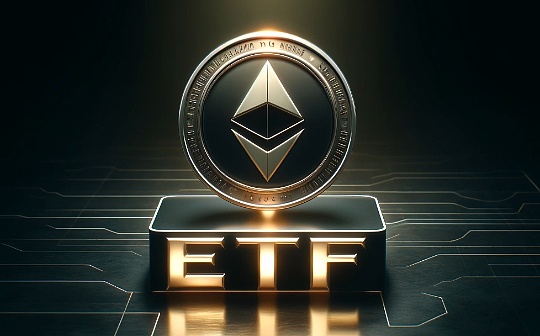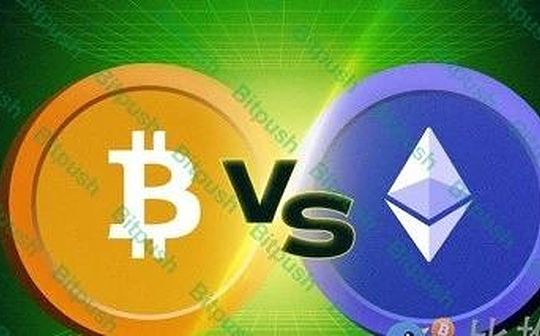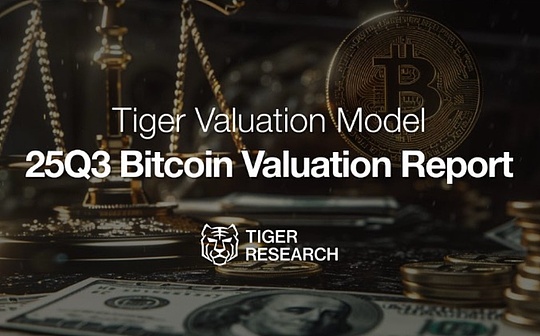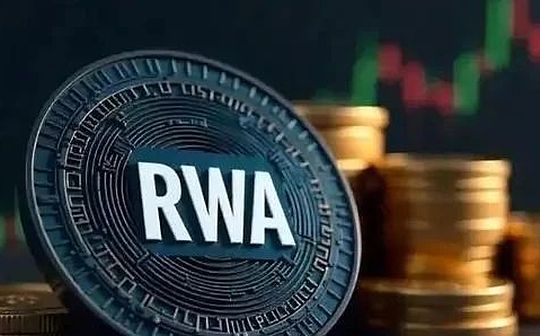
Source: Buyu said
This article explains my thinking on the recent EIP-3047 incident, thanks to Vitalik and YOAV for review of content.
If you don’t know this incident,Let’s review it hereThe
Not long ago, the EIP-3074 proposal obtained the green light of the core developer, and plans to implement it in Ethereum next hard fork PECTRA.The purpose of this proposal is to allow ordinary Ethereum account (EOA) users to enjoy many conveniences of account abstraction (commonly referred to as AA).
However, the ERC-4337 community, especially the drafters of the proposal, expressed strong opposition to the EIP-3074 proposal. The reason is that the EIP-3047 may exacerbate centralized risks, and it is inconsistent with the abstract roadmap of the Ethereum account.The core of the roadmap is EIP-4337 and its close relative EIP-7560 (also known as native abstract account).
Last week, Vitalik proposed an alternative to EIP-7702 as an EIP-3074.It also aims to bring the account abstraction for EOA users, but the design is more suitable for the current EIP-4337 standard, and it can smoothly transition to the final form-EIP-7560.

Translator’s Note:ERC-4337 and ERC-7560 are abstracts related to accounts in the Ethereum ecosystem, which aims to improve user account management and interaction methods, and improve user experience and security.
ERC-4337 allows users to manage their accounts through proxy Contract, reducing the complexity and risk of user DAPP interaction.ERC-7560 aims to directly integrate the concepts in proposals such as ERC-4337 into the basic layer of Ethereum, so that all accounts naturally have the ability to abstract accounts, thereby providing deeper integration and optimization.
ERC-4337 is an important step to transition to ERC-7560. The two together form the core of the Ethereum account abstract roadmap.
At present, the core developer team is rightEIP-7702For discussions, some early signs and community feedback showed that the EIP-7702 is likely to replace EIP-3074 in PECTRA hard forks.
As a result, I personally feel very satisfied: EOA users are about to use the tools and infrastructure created for ERC-4337 to enjoy the majority benefits brought by account abstraction.
However, the process of achieving this goal makes me difficult to release it. It feels far from the best path. This is also the common feelings of many people recently.I am convinced that if there is a more complete process, we can originally reduce disturbances and reach consensus faster.
In this article, I plan to:
-
Analysis of the problems existing in the process
-
Put forward the thinking framework of Ethereum governance
-
Discuss how to improve and avoid repeating the same mistakes in the future
Why do you feel dissatisfied?
The whole incident makes many people feel dissatisfied, and there are some reasons:
-
The long road to approval: EIP-3074 took a few years to finally get a green light.
-
Feedback lag: The core developer only passed after 3074 passed, and only hear the opposition voices from the ERC-4337 community.
-
The early warning did not work: Although the author of the 4337 proposal has repeatedly put forward concerns about the core developers, it has little effect.
-
The change of the string is even more: Now, we face the situation where we revoke the EIP-3074 and replace it with EIP-7702.
Objectively speaking, it is not inappropriate to read each link alone:
-
Long -term discussion is reasonable.
-
It is normal to encounter opposition after approval.
-
If new problems emerge, adjustment and even cancellation of original decisions are also logical.
However, we may all agree that this process can be smoother.Imagine if things develop this way:
During the core developers discussed the EIP-3074 period, the ERC-4337 community actively participated in it.In this way, there are only two possible results:
-
Either the EIP-3074 is approved after considering the feedback of the EIP-4337 community (maybe it may be modified), then the EIP-4337 community will support EIP-3074, and there is no need to overthrow the decision of 3074.
-
Alternatively, EIP-3074 has never been approved, but the EIP-4337 community cooperates with core developers to jointly promote a proposal that everyone is satisfied with, just like EIP-7702.
Everyone’s voice was heard and there was no dramatic reversal.This should be an ideal ending -but why failed?
Where is the problem?
Back to the entire process, both sides have accusations.
Core developers (author of EIP-3074) feel that if the EIP-4337 team is more actively participating in the ALL Core DEVS process (commonly referred to as ACD) process, the problem will not happen.
In this process, the proposal needs to be discussed for a long time, and the client team will eventually accept and integrate into the agreement.They believe that the EIP-4337 team could have been involved at any time and put forward their concerns instead of waiting for the EIP-3074 to be approved.After all, the process of the Ethereum Core Developer Conference is open and transparent, and the meeting is open to the outside world. Tim Beiko and others will also post a summary after each meeting.If the EIP-4337 team really cares so much, why not invest time to participate?
On the contrary, the account abstract team (the author of the EIP-4337) emphasized that they actually participated in the Ethereum core developer conference and seized each opportunity to oppose the EIP-3074, but it was not adopted by the core developers.Members of the EIP-4337 community are generally surprised. Many people think that the EIP-3074 has been abandoned, and I don’t even know that the EIP-3074 is still considering.
In addition, there are also opinions that the process of the Ethereum core developer conference is too complicated, and it is difficult to participate for those who have full -time jobs and cannot keep up with each step.Others believe that the opinions of those who actively solicit key interests (such as the EIP-4337 community) should be the responsibility of the Ethereum core developer conference.
In my opinion, the core of the problem is not completely seized on both sides.There is a deeper problem that plays a role. Unless we solve it or at least face it, we will repeatedly encounter the governance failure and be caught in meaningless mutual accusations.
Paranar
The true crux of the failure of governance is that everyone generally misunderstand the Ethereum core developer conference.The Ethereum Core Developer Conference is not the only decision -making force for the agreement. In this case, another governance force is actually over the Ethereum core developer conference, playing a decisive role.
The problem is that although this vital governance force is in major affairs of Ethereum, such as account abstraction and scalability, it is rarely officially recognized.
I call this power “roadmap” here.
In short, the storm of the entire 3074 to 7702 is a typical case of the “roadmap” power over the Ethereum core developer conference.
From the perspective of governance, when an invisible force is covered through a visible force, we should be alert, because the invisible is unsuccessful, so we must expose and examine this hidden power.
What is a roadmap?
In the Ethereum circle, the term roadmap will be familiar to it. For example, the roadmap with rollup as the core, ETH 2.0 roadmap, or the account abstraction roadmap discussed the focus of this time.
Imagine that at a Ethereum core developer meeting, everyone is discussing how to expand the network scale:
Core developer BOB proposal: I support EIP-1234. It advocates that the block time is 10 times, the block capacity increases by 10 times, and the transaction fee will be 100 times.
Other developers answered: Are you serious?
Think about why the Bob’s proposal was quickly rejected?He did propose an effective capacity expansion solution, and other public chains such as Solana were operated, and the effect was significant.
The reason is that the BOB’s proposal and Ethereum adhere to the Rollup as the core to the capacity expansion route diagram.This route map emphasizes that in order to maintain the decentralized characteristics of the blockchain, ordinary users can easily run nodes.Therefore, the BOB proposal has greatly increased the difficulty of running nodes, which is not consistent with the route diagram, and is naturally excluded.
Through this example, what I want to show is that the core developers participating in the Ethereum core developer conference and responsible for the renewal of the agreement actually follow the higher guidance principle, that is, the roadmap I call.There are various roadmaps, such as the expansion roadmap, account abstract roadmap, MEV roadmap, etc. They together constitute the overall roadmap of Ethereum, which is the basis for the decision -making of the core developers.
When the core developer is inconsistent with the roadmap
Because the route map is not part of the formal governance, the core developers may not always be consistent with it.In particular, because there is no official process such as “approval roadmap”, not all roadmaps enjoy the same degree of recognition.This requires the planners behind the roadmap to actively promote the core developers and the majority of communities to win recognition and obtain the recognition and support of core developers.
Taking account abstraction as an example, Vitalik has repeatedly respected the roadmap centered on EIP-4337, but in fact it is mainly the EIP-4337 team, especially YOAV and DROR.Actively advocate this route.
However, even so, some core developers still oppose the route map centered on EIP-4337. They believe that EIP-7560 (that is, the native version of EIP-4337, the future client needs to be realized) is too complicated, not to achieve account accountsThe only way to abstract the final form.In the end, although the EIP-4337 team opposes the EIP-3074, it will split abstract account ecology due to the introduction of another more decentralized account abstract technology stack. The Ethereum core developer conference still approves EIP-3074.
However, after the EIP-3074 was approved, the strong opposition of the entire EIP-4337 community prompted the core developers to re-examine the EIP-3074.The dispute between the two sides was until Vitalik proposed an alternative to EIP-7702 as an EIP-3074 at a critical moment. It clearly supports the development of an account abstraction solution centered on EIP-4337, which has promoted the situation in the direction of following the abstract roadmap.
Vitalik’s role
Although Vitalik is regarded as a researcher, it can be seen from this incident that he played a unique role in the governance of Ethereum.This leads to a question: What role does Vitalik play in Ethereum’s governance?
We can imagine Vitalik as a CTO of a large company.
If you have worked at a technology company of a certain scale, such as more than 50 people, you will understand that CTO cannot participate in every technical decision.With the growth of the company’s scale, technical decisions naturally spread out, and sub -teams in various product fields can generally determine their specific implementation details.
Moreover, CTO is not necessarily the top expert in all fields.There may be engineers who are more powerful than CTO in some aspects.Therefore, in technical disputes, it is often the final decision of engineers.
However, CTO is responsible for formulating the company’s technical vision, while the specific execution is handed over to the developer.
Although this metaphor is not perfect, it is quite accurately depicting the role of Vitalik in the Ethereum ecosystem.
Vitalik will not participate in every technical decision -he cannot do this, and he is not the top master in all fields.However, he has a huge impact on all key aspects of Ethereum (such as expansion, account abstraction, rights and interests, etc.). This is not only because of his technical knowledge, but also because he can finally judge whether a roadmap is matched with Ether etheries.Fang’s vision -that is, his own vision -consistent.
The driving force behind each successful product is the vision
As an entrepreneur, I think every successful product has a clear vision behind it.And such a vision often requires a few people, usually the founding team, and even only one key founder is established.
The charm of Ethereum is that such a complicated structure, involving a multi -level system, can work together to become a decentralized computer that circulate huge value daily.This is not reached by committee -style decisions, but thanks to Vitalik’s leadership of its vision, we have a coordinated and efficient Ethereum today.From the concept of 2015, Ethereum has always been the embodiment of Vitalik’s wisdom.
This is not the contribution of other researchers and engineers, and they have contributed to the development of Ethereum.But at the same time, it is undeniable that Ethereum is the ultimate display of Vitalik’s vision, far beyond the influence of any other individuals.
Ask yourself honestly, when you join the openness of Ethereum, anti -review, and innovative vitality, do you care about the original ideas that all originated in Vitalik?
Maybe I didn’t think about it before, but do you really mind after understanding this?
Ethereum was born of a clear vision and continued to grow in the process of continuing to realize this vision, and this is the charm.
What about decentralization?
You may ask, how can we say that it is decentralized if a person has such a major influence on Ethereum?
To answer this question, we can refer to a classic article written by Vitalik, which explains the multiple meanings of decentralization.The key point of the article is that decentralization includes three aspects:
-
Decentralization in architecture: How many nodes are invalidated to stop operation?
-
Logic decentralization: Can the system evolve independently without affecting the overall function?
-
Political decentralization: How many people or entities control this system?
-
Decision deadlock: All parties are unwilling to compromise, and the project is stagnant, just like the debate of EIP-3074 did not break the deadlock until Vitalik’s intervention.
-
Design chaos: The system may become an uncoordinated superstition body, just like the endless and incompatible situation of EIP-3074 and EIP-4337.
-
Values: Everything starts with a set of basic principles and beliefs shared by the Ethereum community
-
Vision: As the founder, Vitalik, based on the values of the community, depicts the vision of the future development of Ethereum.
-
ROADMAPS: With a clear vision, the research team will start to formulate specific steps to realize these dreams.They have designed technical paths to go to the target step by step.
-
Clients (Clients): Finally, the core developer team writes code and maintains client software based on the roadmap to ensure that all technical plans can become reality and allow users and developers to be practically used.
-
Improve EIP transparency: Make sure that EIP is being considered more open and transparent to the community, avoiding the situation that is similar to that of EIP-3074 is surprised.In fact, the EIP status marked on the EIPS website is not synchronized with the review of the Ethereum core developer conference. Therefore, even if the core developers have agreed to the EIP-3074, the status is still displayed as “review. It is recommended to pass the Ethereum Foundation.The social media platform will notify the community to be adopted in advance.
-
Enhance community participation: Set up a specific period of community members to discuss the impact of EIP on downstream projects at the Ethereum Core Developer Conference Conference, which can prevent the accidents caused by EIP-3074 on the EIP-4337 community.At the same time, if the researchers find that their feedback has not been valued by the core developers, like the dilemma encountered by the EIP-4337 team, members of the community may be invited to discuss their own positions.
-
Mutual understanding and continuous communication: Core developers and researchers must understand each other. They are key forces of governance, but they are different.Core developers have “execution rights” through the implementation client, which is equivalent to having “voting rights”.Through actively sharing and discussing their roadmap, researchers have received wider community support and formed a “roadmap influence”.
Ethereum is undoubtedly decentralized in architecture and logic, because it can be distributed between many nodes, and different components (such as consensus mechanisms and execution layers) can develop relatively independently.
As for political decentralization, the good news is that no single entity can close Ethereum, including Vitalik.However, it is undeniable that Vitalik’s important position in setting the Ethereum vision and road diagram means that there may be compromise in political decentralization.
My opinion is that in order to make Ethereum continue to innovate, we should accept Vitalik as a substantial CTO role, even if this reduces political decentralization to some extent.Before Ethereum is not yet mature until the stability of Bitcoin, there is a need to have such a highly respected authoritative person. He not only makes decisions based on technological advantages and disadvantages, but also ensures that these decisions meet the long -term vision of Ethereum.
Without a role like Vitalik, Ethereum may face two scenarios. This time the EIP-3074 incident is a lively example:
Therefore, at the stage of rapid evolution in Ethereum, Vitalik’s leadership is essential for maintaining an ecosystem that is both centralized and not losing its sense of direction.
The importance of the community
At this point, we have almost built a comprehensive understanding of Ethereum governance, but there is another key part of the discussion that has not mentioned the role of the community.
If Vitalik sets the vision and researchers plan the roadmap according to this, the core developers are subsequently implemented, what role does the community play in it?Isn’t it impossible?
In fact, the community plays the most core role.Because before the vision is formed, there is a more basic thing -values.We gather into a community due to sharing certain values. These values are the cornerstone of Vitalik’s vision. We must match it, otherwise the community will no longer exist.
It may be the impact of the background of growth, or the inspiration of the past experience. Everyone in the Ethereum community realizes the establishment of a computer that everyone can and cannot be reviewed and truly decentralized at some moment.Value.Our work on Ethereum every day is the practice and affirmation of these values. It is through these actions that we have given Vitalik, researchers and core developers’ vision, route charts and code to life and legitimatesex.
Ethereum governance simplified model: VVRC framework
Imagine the governance of Ethereum like a carefully designed machine. We simplify it into four key parts:Values (VISION), Vision, Roadmap (Roadmaps) and Clients (Clients), referred to as VVRC modelsEssence
This process sounds smooth, but it will be more complicated in reality.For example, core developers actually have the final decision -making power because they are responsible for the realization of the actual software.Vitalik and other researchers are more provided for suggestions. Sometimes their proposals may not be adopted, as shown in the EIP-3074 incident.
In general, the VVRC model helps us understand how Ethereum is promoted to governance under the ideal situation. At the same time, we also remind us that we need to constantly adjust and improve this process to avoid problems similar to EIP-3074 again.
How to improve Ethereum governance
In order to optimize the governance structure of Ethereum and ensure that the EIP-3074/ EIP-7702 incident is avoided.
When the opinions of both parties are inconsistent, the core developers may tend to directly overthrow researchers’ ideas, just as they do what they do for the EIP-4337 team.However, it is easy to cause a rebound because the power balance between the two parties will be broken when the conflict between the two parties will be broken. The chaos caused by the EIP-3074 is an example.
Conversely, when researchers encounter resistance, they may choose not to cooperate with core developers. This is also the birth of the RIP (ROLLUP IMPROVEMENT PROPOSAL) process and native account abstraction (EIP-7560) as one of the reasons for RIP instead of EIP.
Although RIP helps L2 experimented with the protocol update that is difficult to adopt by L1 is useful, it cannot replace the participation of the EIP governance process.Researchers must adhere to the communication with core developers until the roadmap is unanimously recognized.
Through the above measures, the transparency of governance can be enhanced, community participation, and effective cooperation between core developers and researchers, and reduce possible governance problems in the future.
Summarize
Ethereum’s EIP-3074/EIP-7702 event reveals the complexity of its governance structure:In addition to the formal governance process (promoted by the core developer according to the proposal of the EIP and the Ethereum core developer conference), the informal roadmap proposed by the researchers also has a huge influenceEssenceWhen these two forces are not coordinated, it may cause decision -making deadlock or suddenly turnAt this time, Vitalik’s role is particularly critical. He can coordinate all parties by relying on his grasp of Ethereum. Similar to the spiritual leaders of a projectEssence
We will simplify the governance of Taifang into a model: the values of the community → Vitalik’s vision → the implementation of the research team’s roadmap → the implementation of core developers (VVRC models).This chain shows how decisions gradually refine it from a wide range of ideas to specific technical implementation.
In order to improve the efficiency of governance, it is necessary to modify the problems that deviate from this ideal model in practical operations.After all, good Ethereum governance is the core mechanism to promote the advancement of the project.As an example, the EIP-3074 event exposes the weaknesses in governance and provides us with opportunities for learning and improvement to ensure that in the future to better cope with similar challenges and promote the sustainable and healthy development of Ethereum.







